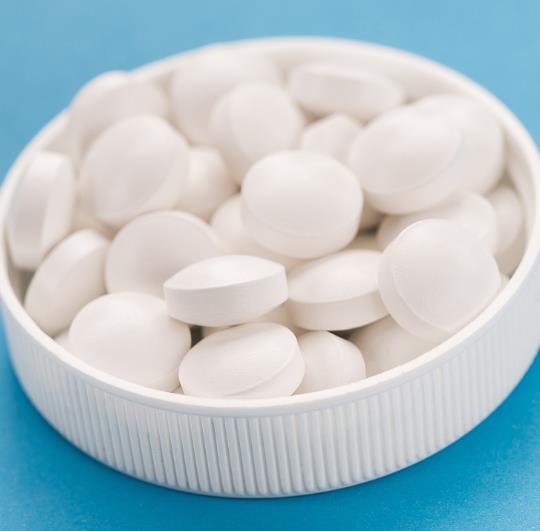Active Pharmaceutical Ingredients (API), popularly speaking, are the raw materials of medicines, only pharmaceutical raw materials are processed into pharmaceutical preparations , can they become medicines available for clinical use, so drugs we usually eat are the finished drugs through processing. Active Pharmaceutical Ingredients based on its sources can be divided into two major categories ,including chemical synthetic drugs and natural chemical drugs. Chemical synthetic drugs can be divided into organic synthetic drugs and inorganic synthetic drugs. Inorganic synthetic drugs are inorganic compounds ( very few is element), such as aluminum hydroxide, magnesium trisilicate which are used for the treatment of gastric and duodenal ulcers ; organic synthetic drugs are mainly composed of drugs made by basic organic chemical raw materials, through a series of organic chemical reactions (such as aspirin, chloramphenicol, caffeine, etc.). Natural chemical drugs ,based on its sources,can be divided into two categories including biochemical drugs and plant chemical drugs. Antibiotics are generally made by the microbial fermentation, which belongs to the biochemistry category. A variety of semi-synthetic antibiotics occurs in recent years,which are biosynthesis and chemical synthesis combining products.Among active Pharmaceutical Ingredients, the organic synthetic drugs varieties, yields and values have the largest proportion,which are the main pillars of the chemical and pharmaceutical industries. The quality of active Pharmaceutical Ingredients decides whether the formulation is good or bad , so its quality standards are very strict ,countries in the world have developed national pharmacopoeia standards and strict quality control methods for its widely used active Pharmaceutical ingredients.
The Impact of Paliperidone Palmitate in Psychiatric Care: A New Era for Schizophrenia Treatment
Paliperidone Palmitate stands as a beacon of progress in the treatment of psychiatric disorders, particularly schizophrenia and schizoaffective disorder.
Dec 19,2024 APIFenbendazole: A Comprehensive Overview of Its Chemistry, Synthesis, and Applications
Fenbendazole, a benzimidazole anthelmintic, is extensively used in veterinary medicine for the treatment of parasitic infections.
Dec 19,2024 APIToxicity of 1,4-Butanediol and its treatment
1,4-Butanediol (1,4-BD) is a clear, slightly viscous liquid with low vapor pressure. It is soluble in water, alcohol, esters and ketones, insoluble in aliphatic hydrocarbons, and can be used to make p
Dec 19,2024 APIMesityl Oxide: Chemical Properties, Pharmacokinetics and Detection Method
Mesityl Oxide, with its stable structure and low reactivity, can undergo substitution reactions and efficient absorption, allowing quantification via gas chromatography in pharmacokinetics.
Dec 18,2024 APIChloral Hydrate: Applications as Aedative Agent for Neurodiagnostic Procedures and its Dosage
Chloral hydrate, effective for pediatric sedation, poses risks like desaturation and vomiting but offers benefits such as lower cardiovascular risks.
Dec 17,2024 APIThe mechanism of action of Dihexa
Dihexa has become a pioneering peptide drug that can address neurodegenerative diseases, including Alzheimer's disease.
Dec 17,2024 APIThe mechanism of action and precautions of Hydroxychloroquine sulfate
Hydroxychloroquinone sulfate is a derivative of chloroquine and is the cornerstone of treating autoimmune diseases.
Dec 17,2024 APIUses and Synthesis of Ethyl Laurate
Ethyl laurate is an organic ester with tuberose essence and fruity odor, slightly sweet, fruity and soft, with a light coconut or floral scent.
Dec 16,2024 APIMildronate: Overview and Pharmacological Activity
Meldonium is classified as a partial inhibitor of fatty acid oxidation; it binds to and competitively inhibits gamma-butyrobetaine hydroxylase.
Dec 16,2024 APISodium triacetoxyborohydride: Applications in Selective Reductive Amination and its Detection Method
Sodium triacetoxyborohydride enables precise amine synthesis via selective reduction of imines and can be detected by GC method using 3,4-dihydroisoquinoline.
Dec 16,2024 API












